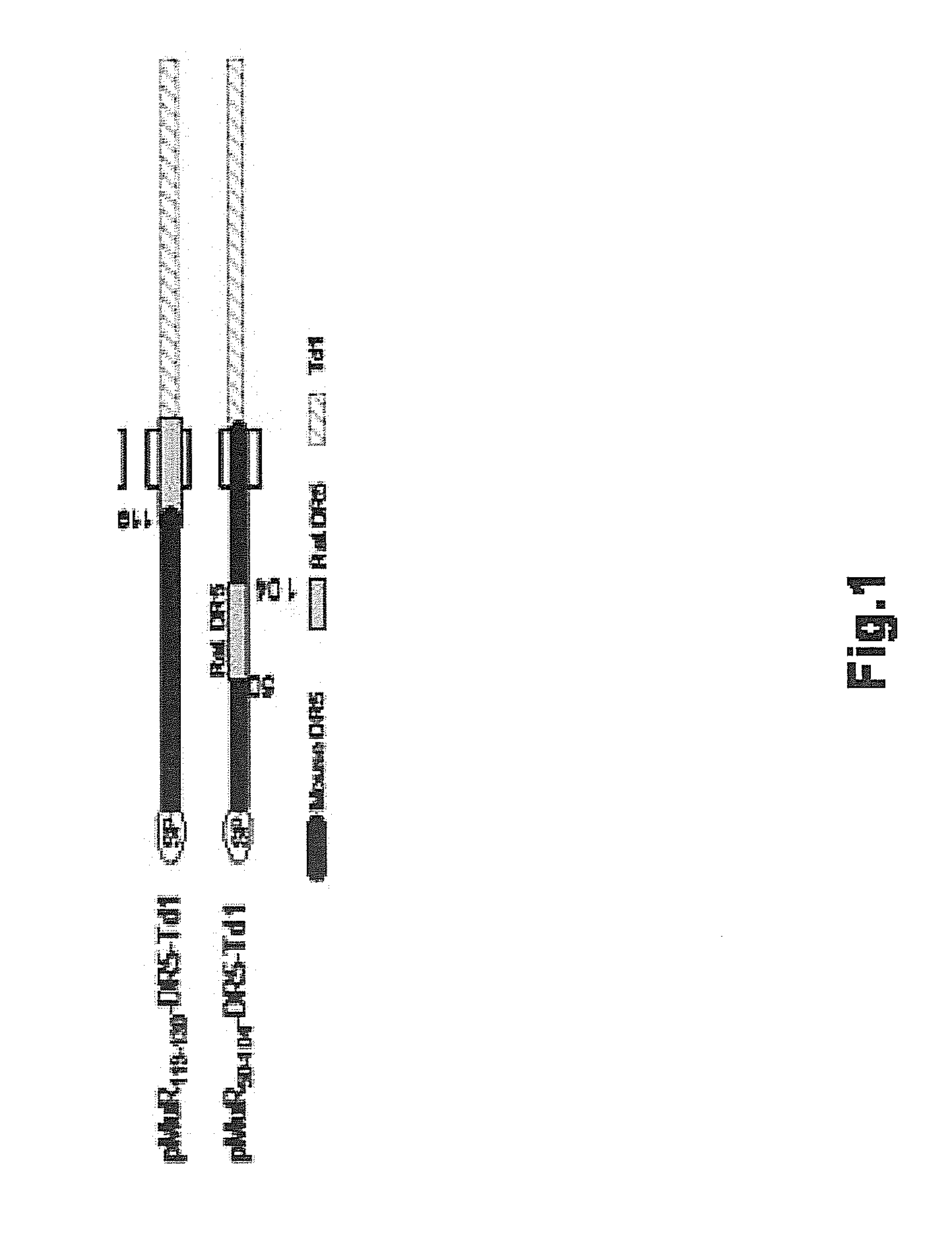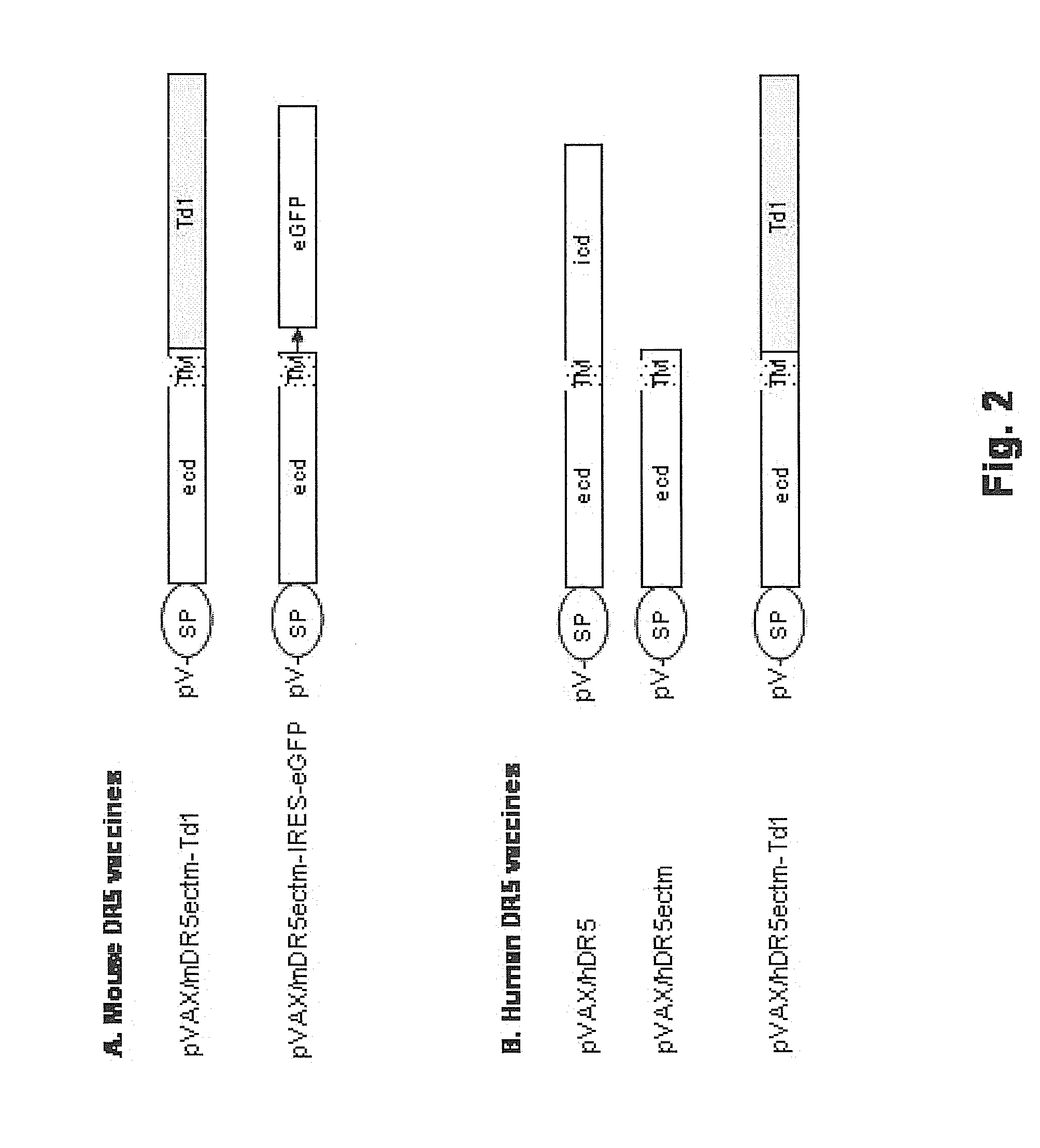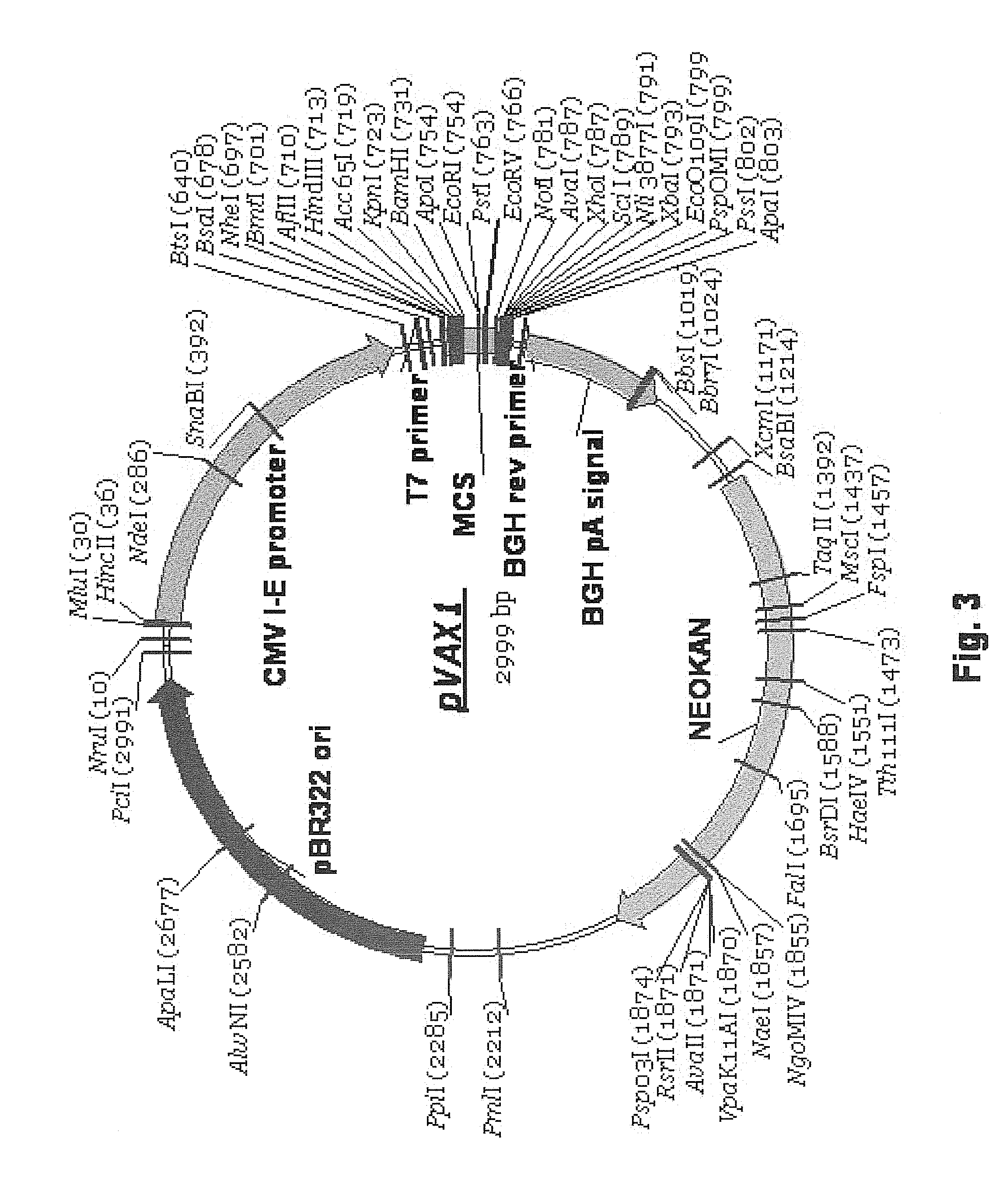Vaccines targeting cellular death receptors
a cellular death receptor and vaccine technology, applied in the field of vaccines, can solve the problems of inability to prolong the treatment period required for chronic diseases, high production cost of clinical monoclonal antibodies, and inability to induce host immune responses to themselves, so as to increase immunogenicity or tolerance breaking power, reduce or eliminate existing target cell populations, and promote the maturation and antigen presentation ability
- Summary
- Abstract
- Description
- Claims
- Application Information
AI Technical Summary
Benefits of technology
Problems solved by technology
Method used
Image
Examples
example 1
Anti mDR5 Vaccine Overcomes Tolerance and Induces Anti-Death Receptor Antibodies which Protect Against Tumor Development
Tumor Cell Lines and Culture
[0094]All tissue culture reagents were purchased from Invitrogen (Carlsbad, Calif.) unless otherwise specified. Cell lines were maintained in vitro in DMEM supplemented with 5% heat-inactivated cosmic calf serum (Hyclone, Logan, Utah), 5% heat-inactivated FBS (Sigma, St. Louis, Mo.), 10% NCTC 109 medium, 2 mM L-glutamine, 0.1 mM MEM non-essential amino acids, 100 units / ml penicillin, and 100 μg / ml streptomycin.
[0095]D2F2, a mouse mammary tumor line, was derived from a spontaneous mammary tumor that arose in the BALB / c hyperplastic alveolar nodule line D2 originally induced with prolactin (Mahoney et al., 1985). Line 4T1 was derived from a spontaneous mammary tumor that arose in a female BALB / cfC3H mouse which was a BALB / c mouse infected with mouse mammary tumor virus MMTV(C3H) (Miller et al., 2004). The TUBO cell line provided by Dr. Gui...
example 2
Anti Human DR5 Vaccine Induces Predominantly Agonistic Ab Against DR5
[0114]Construction and Use of pVAX / hDR5.
[0115]Full length wild type human DR5 (SEQ ID NO: 21; deduced amino acid sequence SEQ ID NO: 22) was used as the antigen in the vaccine vector pVAX / hDR5 depicted in FIG. 2B and FIG. 6. The 1446 nucleotide open reading frame (ORF) of human DR5 isoform 2 cDNA was PCR amplified from cloned DR5 cDNA (Accession #NM—147187). The 5′ PCR primer contained a HindIII site and a Kozak consensus ribosome binding site (RBS; GCG ACC ATG G). The 3′ primer contained a BamHI site. The forward PCR primer (h3k-hDR5-f) is: 5′-ATATC TACAA GCTTG CGACC ATGGA ACAAC GGGGA CAGA (SEQ ID NO: 27). The reverse primer (bam-hDR5-r) is: 5′-CTAGA TGGAT CCTTA GGACA TGGCA GAGTC TGC (SEQ ID NO: 28). The 1450 bp PCR product, which contained the full-length DR5 orf with its original start and stop codons, was digested with HindIII and BamHI, then directionally cloned into the HindIII / BamHI sites of pVAX1.
[0116]pVAX...
example 3
Vaccination with Anti-HDR5 Induces Anti-HDR5 Antibodies which Cause Growth Inhibition and Apoptosis in Human Treatment-Resistant Breast Cancer Cells, Effects which are Amplified by Cross Linking and by TRAIL
[0125]In 15-20% of breast cancer patients, the tumors express neither estrogen receptor (ER) nor progesterone receptor (PR) nor Her-2. Patients with these triple negative breast cancers (TNBC) do not have the option of hormone or molecularly targeted therapy after they receive conventional treatment. However, these treatment resistant TNBC have been reported to be uniquely sensitive to extrinsic apoptosis (Rahman et al., 2008). We now show that lines of human TNBC cells are susceptible to the effects of anti-DR5 antibodies induced by vaccination.
Mice, Cell Lines and Reagents
[0126]BALB / c and SCID (age 6-8 weeks) female mice were purchased from Charles River Laboratory (Frederick, Md.).
[0127]Tissue culture reagents and cell line maintenance were as previously reported (Wei et al., ...
PUM
| Property | Measurement | Unit |
|---|---|---|
| Fraction | aaaaa | aaaaa |
| Immunostimulation | aaaaa | aaaaa |
| Solubility (mass) | aaaaa | aaaaa |
Abstract
Description
Claims
Application Information
 Login to View More
Login to View More - R&D
- Intellectual Property
- Life Sciences
- Materials
- Tech Scout
- Unparalleled Data Quality
- Higher Quality Content
- 60% Fewer Hallucinations
Browse by: Latest US Patents, China's latest patents, Technical Efficacy Thesaurus, Application Domain, Technology Topic, Popular Technical Reports.
© 2025 PatSnap. All rights reserved.Legal|Privacy policy|Modern Slavery Act Transparency Statement|Sitemap|About US| Contact US: help@patsnap.com



